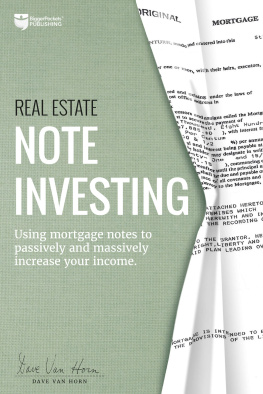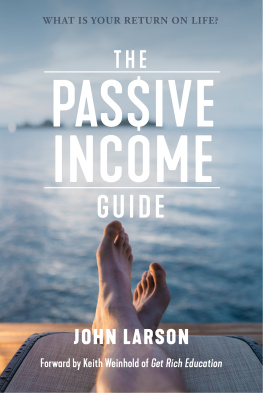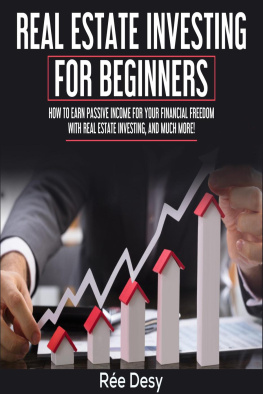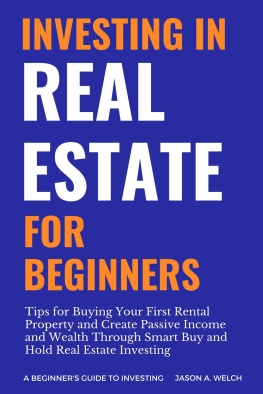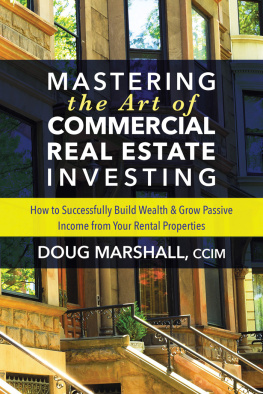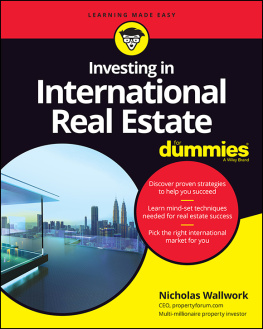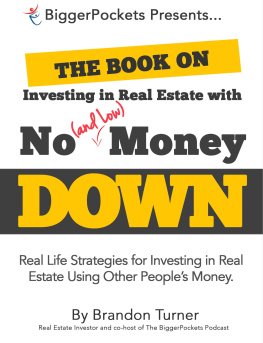This publication is protected under the U.S. Copyright Act of 1976 and all other applicable international, federal, state, and local laws, and all rights are reserved, including resale rights: You are not allowed to reproduce, transmit, or sell this book in part or in full without the written permission of the publisher.
Limit of Liability: Please note that much of this publication is based on personal experience and anecdotal evidence. Although the author and publisher have made every reasonable attempt to achieve complete accuracy of the content in this book, they make no representations or warranties with respect to the accuracy or completeness of the contents of this book and specifically disclaim any implied warranties of merchantability or fitness for a particular purpose. Your particular circumstances may not be suited to the examples illustrated in this book; in fact, they likely will not be. You should use the information in this book at your own risk. Nothing in this book is intended to replace common sense or legal, accounting, or professional advice, and it is meant only to inform.
Any trademarks, service marks, product names, and named features are assumed to be the property of their respective owners and are used only for reference. No endorsement is implied when we use one of these terms.
Real Estate Note Investing
Dave Van Horn
Published by BiggerPockets Publishing LLC, Denver, CO
Copyright 2018 by Dave Van Horn
All Rights Reserved.
Publisher's Cataloging-in-Publication data
Names: Van Horn, Dave, author.
Title: Real estate note investing : using mortgage notes to passively and massively increase your income / by Dave Van Horn.
Description: Includes bibliographical references. | Denver, CO: BiggerPockets Publishing, 2018.
Identifiers: Print ISBN 978-0-997584-77-6 | eBook ISBN 978-1-947200-00-5 | LCCN 2017960651
Subjects: LCSH Real estate investing. | Mortgages--United States. | Discounted mortgages--United States. | Finance, personal. | Real property--Purchasing--United States. | House buying--United States. | House selling--United States. | Mortgage loans--United States. | Wealth. | BISAC BUSINESS & ECONOMICS / Real Estate / Mortgages
Classification: LCC HD255 .V36 2018 | DDC 332.6/324--dc23
Published in the United States of America
10 9 8 7 6 5 4 3 2 1

INTRODUCTION
The Accidental Note Investor
Real estate networking meetings tend to all look the same. Theyre held in either a ballroom in a local Holiday Inn or a small banquet hall in a decent restaurant. Both banquet hall and ballroom sound much too elegant for whats really going on in these placesa meeting of minds. Its basically just a room full of, more or less, middle-class men and women aged twenty-five to sixty (with some exceptions, of course) all looking to get ahead. I didnt know any of this going into my first meeting, of course, but its something Ive come to notice over the years.
Looking back now, I realize I didnt know what I was getting myself into the first time I walked into that ballroom full of real estate investors. As a newer real estate investor myself, I had already achieved my personal BHAG (big hairy audacious goal), which was to buy my first property. In fact, before attending my first meeting, I had already purchased quite a bit of property as a real estate investoreverything from single-family and multifamily homes to one small apartment building. I had done this mostly with traditional bank financing on the first few properties and with some creative financing strategies Id picked up over the years with the rest of my portfolio.
Twenty Units Free and Clear
At this point in my career, I thought I was pretty smart, except for the fact that I didnt call my BHAG a BHAG, because I didnt know what that term was quite yet. I also didnt know that my goal of twenty properties owned free and clear wasnt really where Id end up. See, in my mind, twenty properties seemed like a lofty idea, a goal I could one day dream of achieving. One hundred properties would be even better! So good, I could hardly imagine it. At either point, I could probably sell one property a year after that and live pretty well into retirement. Now, this wasnt a bad goaland it still isnt for most peoplebut I was fortunate enough to hit a fork in the road around ten units. That was the point when I learned that I didnt really need to follow that exact plan, because there might be a better way.
My Financing Problem
As a guy who owned ten units and was doing pretty well, why was I in this banquet hall just outside Philadelphia on a Thursday night in the fall of 2003? It was simple, really: I had run out of money. I had purchased about ten properties in my own name and had hit a financing roadblock. I needed money. Or at least thats what I thought I needed.
Coming up in a presocial media era, I had, up until this point, always operated solo, networking only with friends, family, and the occasional Realtor or broker Id meet as a part-time Realtor myself. Over the years, Id heard about a local chapter of a national Real Estate Investors Association (REIA) group called the Diversified Investor Group, or DIG. I never could seem to get around to attending a meeting, but it was always an interesting idea to me. It wasnt until I needed something, when I was without any other options, that I decided to go. I thought I could ask other investors how they got around the financing roadblock that had stopped me cold.
Before I even entered the meeting room at my first DIG event, I noticed a row of vendor tables. Too intimidated to walk in, I struck up a conversation with a vendor, an investor-friendly mortgage broker from Pittsburgh, whose specialty was in residential and commercial loans. He naturally asked whether it was my first meeting and why I was there, so I described my dilemma to him. Needless to say, my problem wasnt exactly uncommon. Its actually why he was sitting at that vendor table. We exchanged information that day, and he ended up providing me the financing I needed to get out of my rut. Problem solved! But my story doesnt end there. I didnt just find some financing and head home. That was only the beginning.
Later on, this very lender showed me multiple ways to access capital, and ultimately he helped me refinance and leverage my properties. I didnt realize it at the time, but my very first encounter at DIG was with someone who showed me one of the powerful concepts in real estate and note investing: leverage.
The Power of Leveraging Connections & Knowledge
Attending the meeting was informative but certainly not groundbreakingat least not at first glance. Something did stick with me, though: Not only had I made a great connection with someone who would help me solve my financing problem (and met a few other interesting folks), but I had seen what was happening right in front of me: people standing around as if they knew everybody, talking about deals and transactions they had going, and sharing ideas. It was something I hadnt been doing nor had I experienced in that capacity before that night. You could feel something in the air, an exchange of knowledge that was almost palpable.
I didnt sign a contract for a loan that nightor even get exactly what I thought I was looking forbut I knew if I kept going to these meetings, that would change. So I made a commitment to get more involved and to learn. Every last Thursday of the month, DIG would bring in a speaker to educate attendees on a topic, and many speakers would follow up the next Saturday with a one-day workshop, usually in hopes of selling their wares, which could be anything from a book to a course to a full-on mentoring program. I knew they wouldnt all be right for me, but if I attended as many meetings as I could, I would see a wide array of speakers, learn a little bit about nearly every facet of real estate investing, and maybe find a niche to reach my then-BHAG of twenty houses free and clear.

